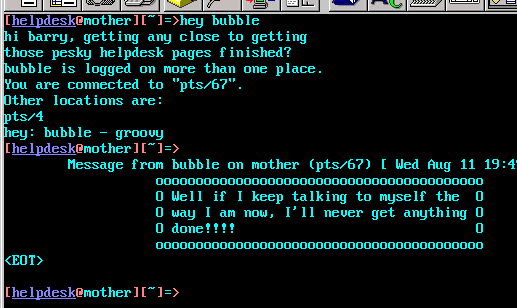

|

|
| ZSH/BASH: | TCSH: |
| export HEY_TITLE="(bubble)" | setenv HEY_TITLE "(bubble)" |
| export HEY_BORDERS="o--||++++" | setenv HEY_BORDERS "o--||++++" |
| export HEY_WRAP=40 | setenv HEY_WRAP 40 |
| export HEY_SUCCESS="Excellent" | setenv HEY_SUCCESS "Excellent" |
| export HEY_PROMPT="%u %n> " | setenv HEY_PROMPT="%u %n> " |